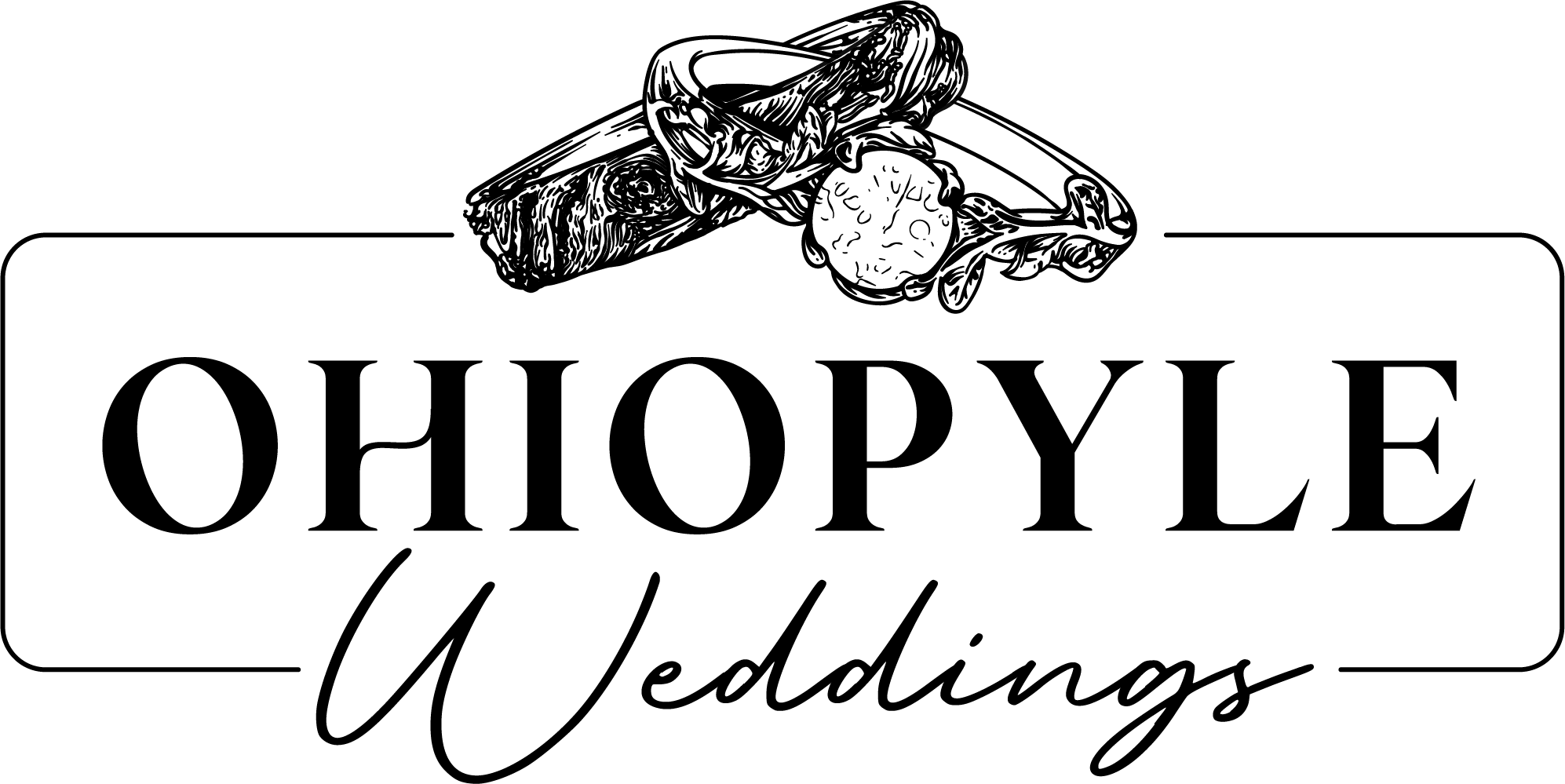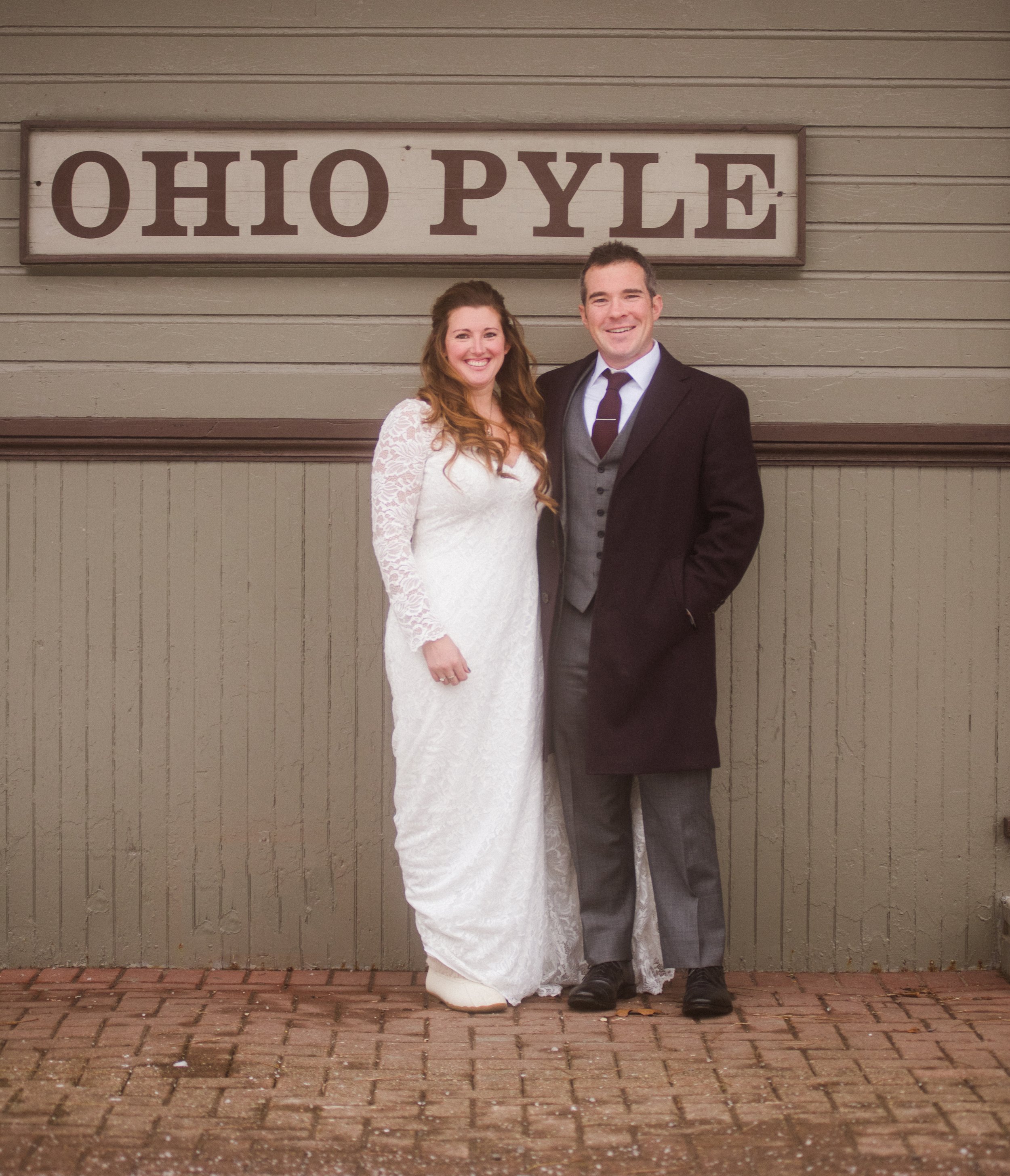The History of Ohiopyle: Welcome to Ohiopyle 101
We have a deep affection for this area, and we believe that understanding its history is key to truly appreciating it. This is particularly true for couples who choose Ohiopyle and the surrounding Laurel Highlands as their wedding destination, as it will soon hold a special place in their hearts. For all the curious cats and history buffs out there, we have created a crash course in all things Ohiopyle. Welcome to Ohiopyle 101.
Let’s hop in the way-way back machine a few thousand years. While the earliest signs of humanity along the Youghigheny River date back almost 10,000 years, the Monongahela Nation were among the first documented group of Native Americans peoples to inhabit this area approximately 1,000 years ago. The year-round flow and cool temperatures of the river likely allowed them to fish and travel making this area and ideal location to call home. The Monongahela mysteriously vanished just as European settlers arrived in the 1600’s. Other native tribes including the Shawnee, Seneca, and Delaware tribes used Ohiopyle as a hunting ground or passed through its land due to the growing European population forcing them out of their native lands. The name Ohiopyle is derived from the Lenape Delaware phrase “Ohiopehelle” meaning “white, frothy water”. This phrase so perfectly captures the essence of the area, as it refers to the white, frothy water of the majestic Youghiogheny River.
Jumping forward to 1754, George Washington and his troops took to the Youghiogheny, with the aim of reclaiming Fort Duquesne from the French soldiers. A young George Washington floated the Yough River from present day Confluence towards Ohiopyle. However, he ended up abandoning the river as it gained speed near what we now know as the 20-foot- tall Ohiopyle Falls. This ultimately led to the establishment of Fort Necessity in response to threats of the looming French attack. In what came to be known as the Battle of the Great Meadows at Fort Necessity, the French and their Native American allies defeated Washington and his soldiers, resulting in Washington's only military surrender. This battle is considered one of the first engagements of the French and Indian War.
Moving forward in time to the early 1800s, the forestry industry brought growth to the region. In 1803, Lewis and Clark commissioned a keelboat that was built on the banks of the Yough River near McKeesport, Pennsylvania. This boat would transport them on their famed journey across the United States. The early 1800s also saw the completion of the National Road, which was the first federally funded road in United States History. This road was proposed by George Washington and Thomas Jefferson as they believe a trans-Appalachian road was necessary for unifying the young country. The path that would eventually become the National Road was originally cut by Native Americans and known as the Nemacolin’s Trail. This road was a crucial military route during the French and Indian War and a path for settlers headed to the new frontier. With the completion of the National Road also came an increase in the population to the town of Ohiopyle. Today the National Road in Pennsylvania closely follows Route 40 and passes some of the most historically significant and beautiful places in the state, including Ohiopyle State Park, the Great Allegheny Passage trail, Fallingwater, Fort Necessity National Battlefield, and the Laurel Caverns.
In 1871, the necessity for lumber led to the construction of railroads in Ohiopyle. To meet the demand of the lumber industry, a large mill was built on the rock outcropping next to Ohiopyle Falls. The river was used to float felled trees downstream to the mill, where the water powered a large wheel to run the mill. The lumber of the surrounding Laurel highlands played a vital role in the Industrial Revolution serving as fuel to the growing steel, coal, and iron industries. The first rail line through the Yough Valley was completed in 1871. This rail line was the means for tourists to escape the booming metropolis of Pittsburgh and retreat to the serene mountains of the Laurel Highlands. Passengers paid just $1 round trip to ride the train from Pittsburgh to the B&O Railroad Station which remains a current fixture in present day Ohiopyle. It was during this time that Ohiopyle became known as “Falls City”. Tourists would stay at one of Ohiopyle’s several grand hotels the most notable being The Ferncliff Hotel. This luxury four-story hotel was constructed on the 100-acre Ferncliff Peninsula, boasting running water, 800 electric lights, and dedicant cuisine. Guests could be found enjoying the amenities of a bathhouse, bowling alley, tennis court, and baseball diamond all located within the oasis of the peninsula. With the invention of automobiles came the decline in rail travel, which was the eventual demise of the Ferncliff Hotel. In time, the buildings were removed, allowing forests to regenerate, but remnants of this era can still be seen today if you know where to look.
Fast forward a couple of decades to the inception of two of the most iconic tourist destinations in the present-day Laurel Highlands: the National Historic Landmarks of Fallingwater and Kentuck Knob. These homes were both designed by architect Frank Lloyd Wright, known for his philosophy of "organic architecture," which holds that buildings should blend seamlessly into their natural surroundings. Wright's designs were known for their bold originality, and his structures represented a perfect harmony of art and nature.
Fallingwater was built in 1935 and is considered to be Wright's crowning achievement in organic architecture. The house was designed to rise above the waterfall over which it was built, creating a breathtakingly beautiful sight. Similarly, Kentuck Knob, built in 1954, is a sight to behold. This crescent-shaped home is nestled into the side of a hill and is perfectly oriented to catch the best light of the day. If architecture is your thing, be sure to tour these masterpieces during your stay.
In 1960 Ohiopyle State Park was founded. The scenic park, filled with massive trees, hiking trails, trickling streams, waterfalls galore, and cut through with the white, frothy waters of the Youghiogheny gained popularity with adventure lovers and nature enthusiasts alike. In 1959 using wooden boats and basically no protective equipment, a small group of young men completed the first decent of the Upper Yough (Calss IV/V river) in Maryland. These men, Bill Bickham, Dave Kurtz, and Tom Smyth unknowingly located a mecca for whitewater rafting in southwest Pennsylvania. Their decent of the Upper Yough laid the groundwork for what would soon become a flourishing community of outfitters, guides, and annual travelers. It wasn’t until 1963 when the Youghiogheny River boasted its first commercial raft trip. Through word of mouth the rafting on the Youghiogheny grew and with that came the need for more outfitters to accommodate for the rise in popularity. One such company was White Water Adventurers founded in 1969 by Ohiopyle natives Robert and Shirley Marietta. Over the years Whitewater Adventurers and whitewater rafting have withstood the tests of time (most recently the pandemic) and one thing remains sure, the town of Ohiopyle and the Youghiogheny River will forever be intertwined with whitewater rafting.
In 1978 Western Pennsylvania Conservancy purchased the first property that would become the Great Allegheny Passage (GAP) trail. This 27-mile stretch of railroad ran from Connellsville to Confluence, with Ohiopyle situated in the middle. In 1986, the nine-miles of trail from Ohiopyle to Confluence opened, ushering the rail to trails movement attracting hundreds of thousands of people to Ohiopyle to experience the trail. Today the GAP trail spans 150 miles from Pittsburgh, Pennsylvania, to Cumberland, Maryland, with visitors still flocking to the original 27-mile stretch to take in the beauty of Ohiopyle State Park from a different perspective. Whether by bike or foot, there's nothing quite like cruising above the Youghiogheny River for miles, passing through Mountain Laurel tunnels, and taking in the rugged landscape of the park.
Today, Ohiopyle welcomes over 1 million visitors each year, who come from all over the world to explore this place we call home. That’s an impressive number for a town with an annual population of 38 and half a mile of borough streets! While Ohiopyle is best known as a nucleus for the whitewater community, it also attracts rock climbers, mountain and road bikers, hikers, trail runners, motorcyclists, leaf peepers, cross-country skiers, snowmobilers, and many other tourists who come to appreciate the beauty of Ohiopyle Falls.
It's amazing to see how the Youghiogheny River and the town of Ohiopyle have evolved over time, from serving as a vital transportation route for Native Americans and early settlers, to supporting the growth of the lumber industry and the subsequent boom in tourism, and finally becoming a hub for adventure sports like whitewater rafting. Ohiopyle has truly become a destination that offers something for everyone, from history buffs and architecture enthusiasts to nature lovers and thrill-seekers. It's a testament to the enduring beauty and appeal of the Laurel Highlands, and a reminder that even as the world changes around us, there are some things that will always remain constant, like the power and majesty of nature. We hope this brief history lesson in all things Ohiopyle helps you feel a little closer to this special place as soon it could be the setting for your next grand adventure. If you have any questions, hop on into our inbox we would love to chat!



